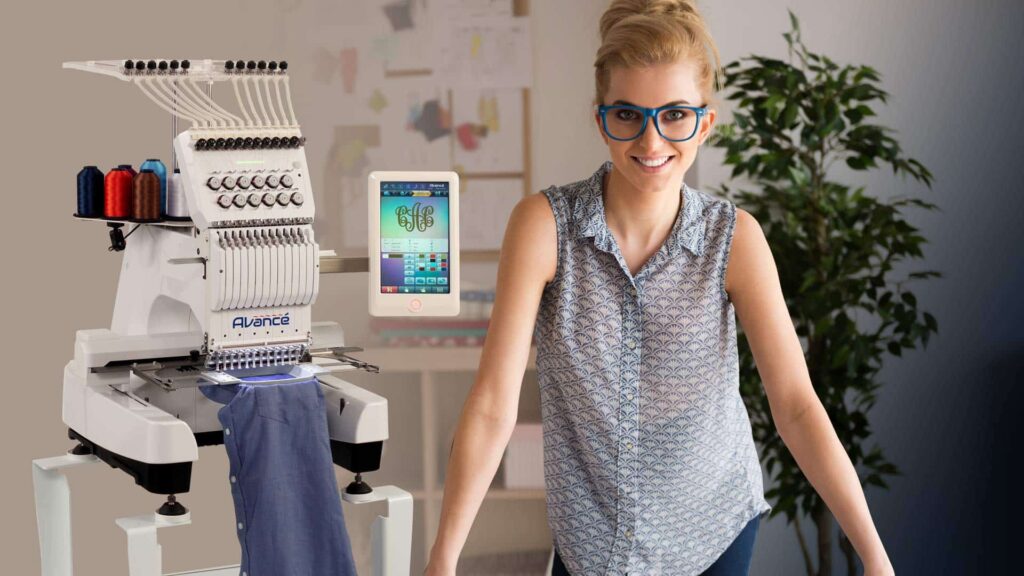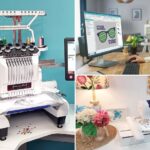Introduction
Embroidering unique designs on apparel, accessories, or promotional items adds a personal and professional touch that makes your projects stand out, whether you’re branding a business or crafting one-of-a-kind gifts. However, turning your vision into a stitch-ready design requires specialized skills to ensure the result is vibrant and precise. Custom embroidery digitizing transforms your artwork into machine-readable files tailored to your specific needs, ensuring flawless embroidery. In this guide, we’ll explore how custom embroidery digitizing works, its benefits, and tips to achieve stunning results for your creative projects.
What Is Custom Embroidery Digitizing?
Custom embroidery digitizing converts digital images, like JPGs, PNGs, or vector files, into embroidery files (e.g., DST, PES, VP3, EXP) that guide machines on stitch patterns, thread colors, and sequences. Unlike automated tools, custom digitizing involves a professional or software tailoring the file to your specific design, fabric, and machine requirements. Digitizers adjust stitch density, underlay, and types (satin for outlines, fill for solid areas) to ensure clean, high-quality stitching, making it ideal for personalized logos, artwork, or monograms.
Why Choose Custom Embroidery Digitizing?
Opting for custom embroidery digitizing offers unique advantages for creating tailored designs. Here’s why it’s a game-changer:
Personalized Designs for Your Vision
Custom digitizing brings your creative ideas to life, whether it’s a complex logo, a detailed artwork, or a unique monogram. Professionals work with you to refine your design, ensuring it translates perfectly to embroidery while preserving its essence. This personalization allows you to create one-of-a-kind pieces that align with your brand or personal style, setting your projects apart.
High-Quality, Professional Results
With expert digitizers or advanced software, you get crisp, vibrant embroidery that looks polished. Custom digitizing optimizes stitch paths, colors, and settings to avoid issues like puckering or thread breaks, delivering professional-grade results. Unlike automated tools, which may produce messy stitches, custom digitizing ensures your design looks flawless on any item.
Consistency Across Multiple Items
For branding or bulk projects, consistency is key. Custom digitizing ensures your design looks identical across all items, from shirts to hats to bags. Digitizers tailor files for different fabrics and machines, maintaining uniformity in color, size, and placement, which builds brand recognition or ensures cohesive personal projects.
Versatility for Any Fabric or Machine
Custom digitizing creates files compatible with all major embroidery machines, like Brother, Bernina, Pfaff, or Janome, offering flexibility to work with various equipment or suppliers. It also optimizes designs for diverse fabrics, from stretchy knits to thick denim, ensuring flawless embroidery on any material, perfect for creative or commercial needs.
Time and Cost Savings
DIY digitizing can lead to errors, wasted materials, and time-consuming fixes. Custom digitizing, whether through software or professionals, delivers ready-to-stitch files quickly, often within 24–48 hours. This efficiency minimizes costly mistakes, making it a smart choice for businesses scaling production or hobbyists with tight schedules.
Methods for Custom Embroidery Digitizing
Several methods make custom digitizing accessible and effective. Here are the top approaches:
Method 1: Use Embroidery Software for Custom Digitizing
Embroidery software allows you to create tailored designs with control and precision. Two user-friendly options are:
- Embrilliance Essentials: An affordable program supporting multiple formats (DST, PES, VP3) with customizable digitizing tools.
- SewArt: A budget-friendly software for creating custom embroidery files, ideal for beginners and advanced users.
Steps to Digitize with Software
- Install Software: Download Embrilliance Essentials or SewArt from their official websites and install it. Both offer free trials.
- Import Your Design: Load your JPG, PNG, or vector file and set the design size to match your machine’s hoop (e.g., 4×4 or 5×7 inches).
- Digitize the Design: Use auto-digitizing tools to trace shapes and colors, then manually refine paths for a custom look.
- Customize Settings: Adjust stitch density, underlay, and types (satin for outlines, fill for solid areas) to suit your fabric and design vision.
- Save the File: Export as your machine’s format (e.g., PES for Brother), transfer via USB, and test on scrap fabric.
These programs make custom digitizing accessible for creative projects.
Method 2: Use Free Tools Like Ink/Stitch
Ink/Stitch, a free plugin for the open-source Inkscape software, offers a cost-free way to create custom embroidery files tailored to your needs.
Steps to Digitize with Ink/Stitch
- Install Inkscape and Ink/Stitch: Download Inkscape and add the Ink/Stitch plugin from their official websites.
- Import Your Design: Open Inkscape, import your JPG or PNG, and use “Trace Bitmap” to create a vector version.
- Customize the Design: Assign stitch types and colors, tailoring the design to your machine and fabric.
- Preview and Adjust: Check the stitch preview and tweak density or underlay for a personalized result.
- Export the File: Select “Embroider” from extensions and choose your machine’s format (e.g., VP3 for Pfaff).
- Test the File: Transfer via USB and stitch a sample to verify quality.
Ink/Stitch requires practice but delivers tailored results for free.
Method 3: Hire Professional Digitizing Services
Professional digitizing services provide expertly tailored files with minimal effort, ideal for complex designs or tight deadlines.
Steps to Hire a Professional Service
- Choose a Trusted Provider: Select a service like MySewnet or an Etsy digitizer with strong reviews and custom design experience.
- Upload Your Design: Submit your JPG, PNG, or vector file and specify your machine’s format, fabric, and design goals.
- Provide Details: Share your vision, including colors, item types (e.g., shirts, hats), and placement preferences.
- Receive the File: The service will email the digitized file, typically within 24–48 hours.
- Test Before Stitching: Stitch the file on scrap fabric to ensure it meets your needs.
Professional services are perfect for flawless, customized results.
Tips for Successful Custom Embroidery Digitizing
To achieve tailored, high-quality embroidery files, follow these tips:
- Use High-Resolution Images: Start with designs at 300 DPI or higher to capture details and avoid pixelated stitches.
- Simplify Complex Designs: Reduce colors and remove fine details that don’t translate well to embroidery.
- Specify Your Vision: Share your project goals (e.g., branding, gifts) and color preferences for accurate customization.
- Test on Target Fabrics: Stitch samples on your project materials to check for issues like puckering.
- Ensure Machine Compatibility: Confirm the file format matches your machine (e.g., PES for Brother, VP3 for Pfaff).
These practices ensure your designs align with your creative needs.
Common Challenges and Solutions
Custom digitizing can present challenges, but they’re manageable:
- Complex Designs: Intricate artwork may not stitch well. Simplify the design or consult with a professional digitizer.
- File Compatibility: Ensure the file format matches your machine to avoid errors.
- Fabric Variability: Adjust stitch settings for different materials to prevent distortion.
- Cost Concerns: Professional services may seem pricey. Compare providers or use software for cost-effective options.
Testing and clear communication resolve most issues.
Tools to Enhance Your Workflow
Boost your digitizing process with these tools:
- Image Editing Software: Use GIMP or Canva to prepare designs before digitizing.
- USB Drives: Transfer files to your machine with a compatible USB stick.
- Stabilizers: Use cut-away for stretchy fabrics or tear-away for woven materials.
- Tutorials: Explore YouTube or Reddit’s r/Embroidery for custom digitizing tips.
These tools streamline your workflow and improve results.
When to Hire a Professional Digitizer
Hiring a professional is ideal for complex designs, tight deadlines, or when you need files for multiple machines. It’s also perfect for beginners or businesses scaling production. Services like Absolute Digitizing, Digitizing Buddy, or local companies deliver tailored files quickly. Choose providers with strong portfolios and confirm they support your machine’s format.
Conclusion
Custom embroidery digitizing transforms your vision into stunning, stitch-ready designs tailored to your needs. Whether you use software like Embrilliance, free tools like Ink/Stitch, or professional services, you can create high-quality files for any machine or fabric. Start with clear images, simplify designs, and test files to ensure flawless results. With these methods, you’ll craft unique embroidery that elevates your brand or personal projects. Dive into custom embroidery digitizing today and bring your creative ideas to life with precision and style.


